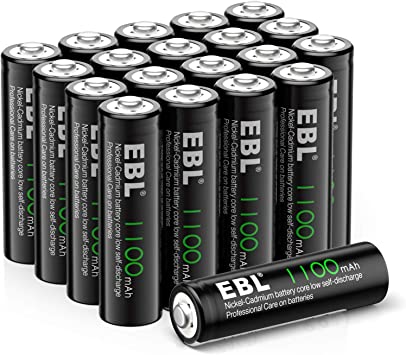Open just about any top drawer in any office or workshop on the planet, and you’re very likely to find an AA battery (or 5) ready to install into one of the billions of compatible devices and products worldwide. Introduced by Eveready’s predecessor company well over 100 years ago, and standardised for America and the world by the end of World War II, it’s still the most popular and widespread electrochemical cell dry battery with a handy 1.5V charge in the world.
But things have changed a little. It was in the 70s when technology first began to emerge promising something quite incredible: with dozens of billions of disposable AA batteries simply tossed into landfill each year, a tantalising alternative had emerged. The first AA rechargeable battery patents were filed throughout that decade until, in 1986 within Canada, a company called Battery Technologies Inc became determined to develop a fully rechargeable battery alternative – and the rest is ultra-modern history.
On the face of it, and especially if your daily operations or rolling budgets rely upon and feature ongoing battery expenditure costs, ‘going rechargeable’ is a no-brainer: less waste, less money, less time, more convenient. Your devices may even perform comparatively better throughout the rechargeable batteries’ cycle life, because that 1.5V stream of power will remain steady unlike a disposable battery which starts progressively losing power as soon as you install it.
So why are there so many disposable batteries still on the market, then – even for the most commonly-used ones, like AA? Sure, they cost a tad more at the checkout but they can then be recharged thousands of times. And this price gap is shrinking more with every passing technological evolution, as is the old problem of losing that rechargeable charge when they’re sitting in a drawer.
Indeed, we think rechargeable AA batteries are now on the verge of replacing their predecessor technology entirely, because another key domino is about to fall – that old notion that a single charge cycle of the rechargeable battery simply does not last as long as a comparable disposable option.
Here’s why:
-
Beyond lithium
If lithium-ion changed the battery game, the industry’s next moves are set to change it again. That’s because if lithium has a downside, it’s lifespan. That problem has been diminishing over the years, but the switch could be flicked on a total reversal of the problem thanks to exciting research into solid-state batteries – which charge radically faster, last radically longer and have a radically extended shelf-life.
-
Lithium … evolved
There are several other new frontiers in revolutionary battery fundamentals being forged as well, but it’s important to note that lithium is yet to run its course. Although it is believed that in terms of materials, chemicals and cell designs, lithium-ion technology is getting close to its limit, new discoveries are still being made. Innovative new compounds open the door for much greater lithium storage within the electrodes – and it’s likely to hit the shelves long before solid state.
-
Sodium, not lithium
Lithium may be great, but battery researchers think sodium may be just as good – or better. Sure, the energy density may be lower than lithium, but sodium is far more abundant and less expensive. And separate South Korean and Chinese sodium-ion battery innovators have already developed early prototypes with lithium-like levels of performance and charge cycles, indicating that enormous untapped potential exists in this area.
AA rechargeable batteries are already long-lasting
Currently, we believe the longest-lasting disposable AA battery is something like the Energizer Ultimate, which was still delivering just a whisker under the full 1.5V after 90 minutes on the 500 lumens torch test – and had only dropped to 1V after another 90 minute run. In comparison, Energizer’s Recharge Universal product is not quite as long-lasting, but it actually outperforms its disposable counterpart for high-drain devices and in low temperatures. And, never forget, it can be recharged 1000-plus times.
Is it time for your organisation to catch the fast-moving train to rechargeable battery technology’s exciting future?


